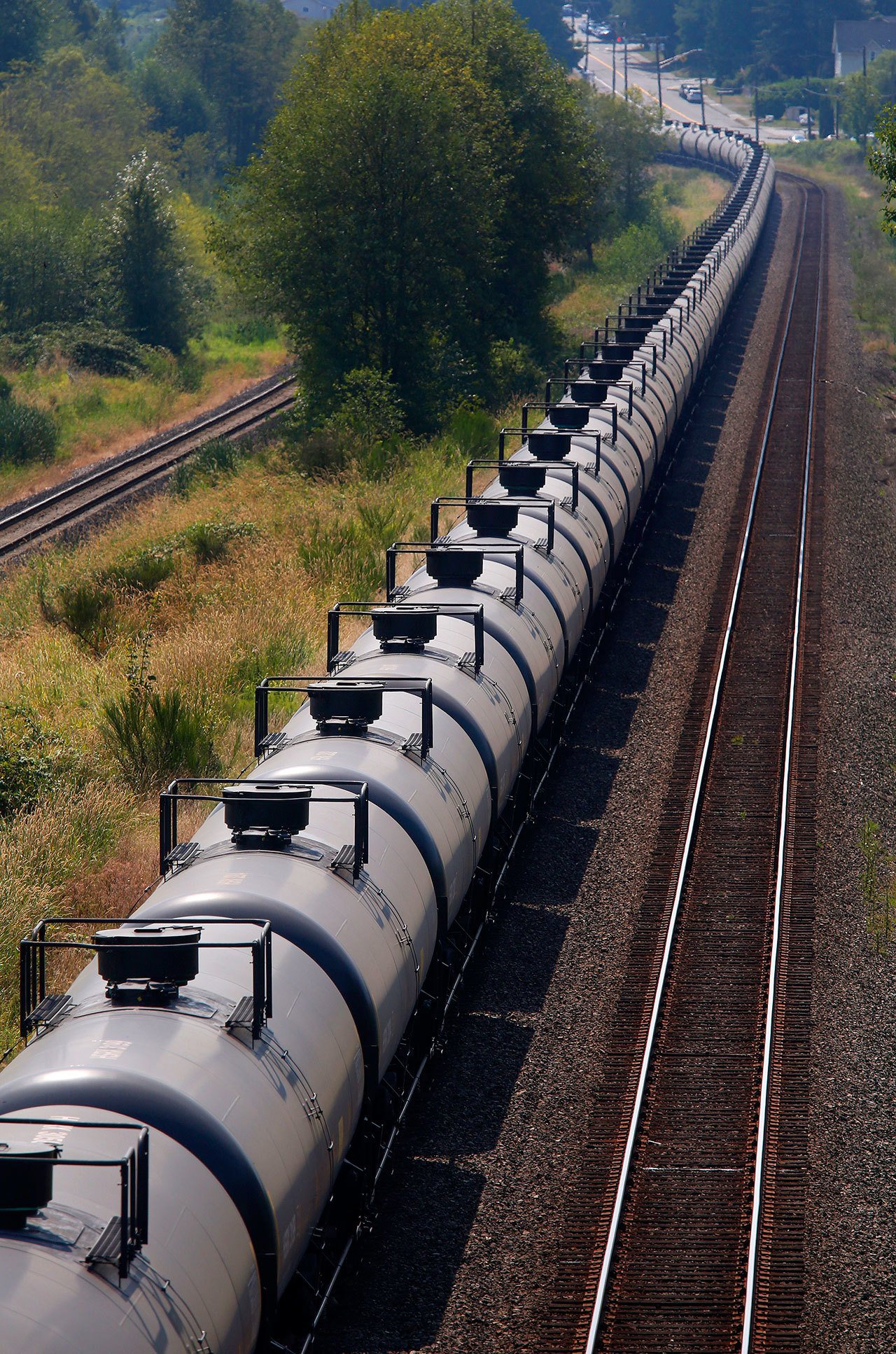By The Herald Editorial Board
As the number of trains and the volume of volatile crude oil — particularly that from the Bakken region in North Dakota, Montana and Canada’s province of Saskatchewan — have increased as it moves across country and through Washington state, so too have the calls for greater information and transparency from the railroads about the shipments of oil, their timing and the condition of the rails and bridges over which the crude travels.
For example, the state Department of Ecology has adopted a new rule, which goes into effect Oct. 1, that requires railroads to notify the department prior to each shipment of oil. The same rule applies to shipments of oil by pipeline. The Ecology Department is then expected to share that information in advance with emergency response agencies along the rail route and publish quarterly reports that detail those shipments.
Greater transparency is supposed to result in greater confidence in the handling of the oil by railroads and oil companies as the resource moves from oil field to refinery and to export.
But some clarification as to what transparency requires is necessary.
Since February, officials at state, county and municipal levels have been granted access to request a report on the condition of the bridges used by the railroads that run oil through their communities. But local officials requesting those bridge inspection reports are seeing little useful detail in them.
As part of the federal Fixing America’s Surface Transportation Act, made law in December, the Federal Railroad Administration facilitates those requests, requesting inspection reports from the railroads on bridges and related infrastructures and forwarding the reports to local officials within 45 days.
The inspection reports are required to provide information on the inspection date, the bridge’s length, location and structure and a general statement on the condition of the bridge.
But the railroads’ intrepretation of “general” isn’t satisfying some.
After Spokane City Council President Ben Stuckart requested copies of Union Pacific Railroad and Burlington Northern Santa Fe Railway bridge inspections, Stuckart told the Associated Press recently that the reports provided “zero detail.” The report was little more than a check-marked box saying that the bridge had passed inspection. A local official near Rochester, New York, was more blunt, calling the inspection summaries “a piece of crap.”
A spokeswoman for BNSF, which is responsible for most of the oil train traffic that moves through Spokane on its way to Western Washington, said that the railroad inspects each of its bridges twice a year and has high standards for safety.
“We will not run trains over or through any infrastructure that we think is unsafe,” said BNSF’s Courtney Wallace.
Certainly, it’s in the railroads’ interest to avoid derailments and rail disasters. But a Union Pacific oil train derailment this June near the Columbia River town of Moser, Oregon, didn’t instill confidence after federal investigators concluded that inspections by the railroad missed broken bolts along a section of track. The resulting derailment spilled 42,000 gallons of crude near the river, caused an explosive fire that burned for 14 hours and forced the temporary closure of the town’s water treatment plant.
Some officials have called for the inspection reports after noting signs of age and wear on bridges, such as rust and corrosion. But the railroads and the Federal Rail Administration’s chief, Sarah Feinberg, claim that such exterior signs of wear and age can be deceiving as to a bridge’s structural condition.
But if a bridge’s appearance isn’t a reliable indicator of its safety, then it’s in the interest of the railroads, the federal agency and the public to provide the detailed information that will answer concerns about the condition of bridges.
“It’s tough when we have to take the industry’s word,” Jerry White Jr., who heads the nonprofit Spokane Riverkeeper group, told the AP.
Either the railroads need to provide the transparency that local officials believed the new rule provided, or the Federal Railroad Agency needs to be more specific about what the word “general” means.
Talk to us
> Give us your news tips.
> Send us a letter to the editor.
> More Herald contact information.

























